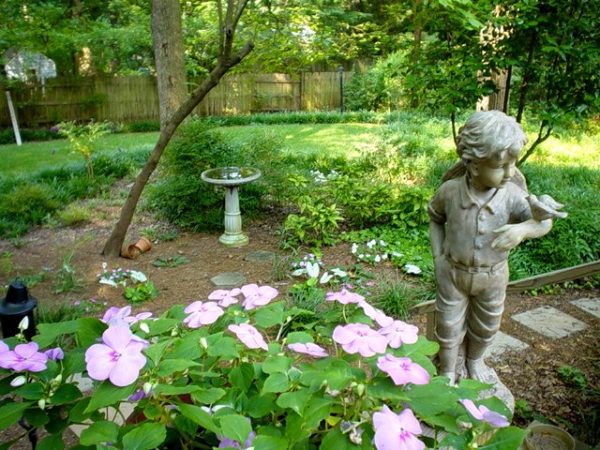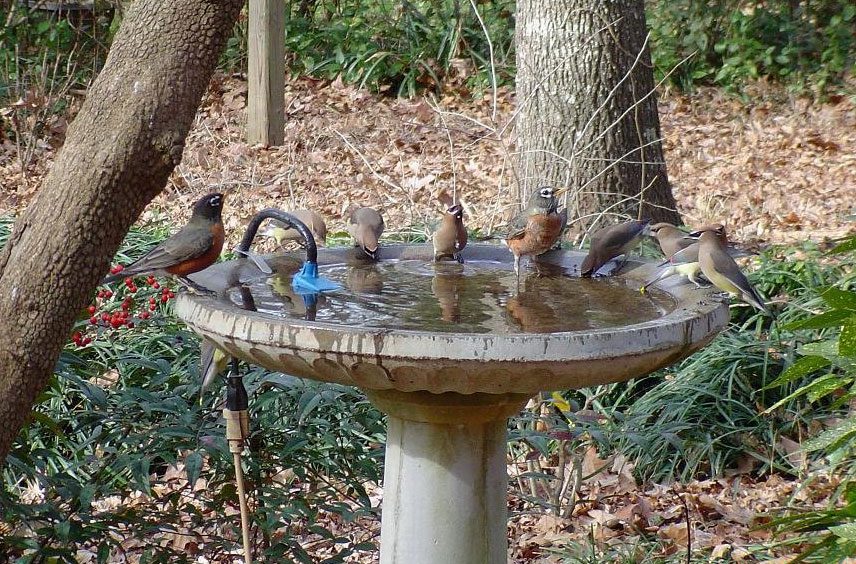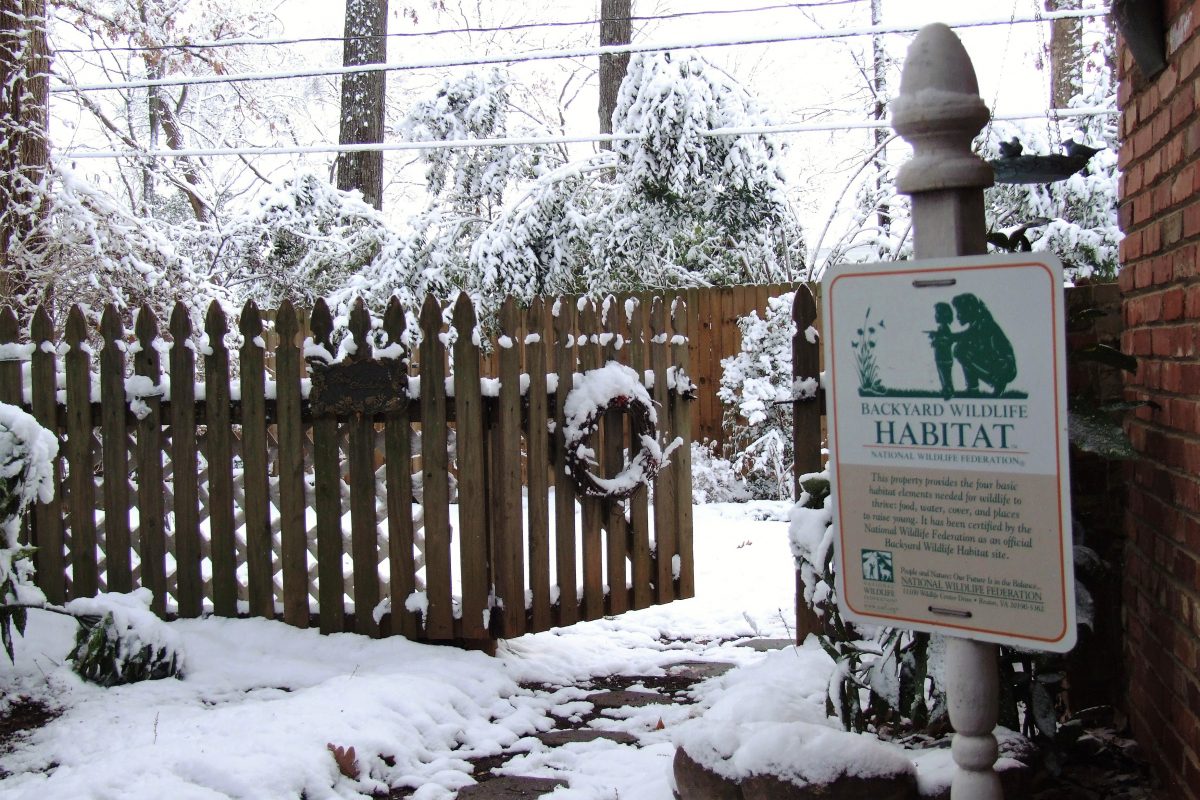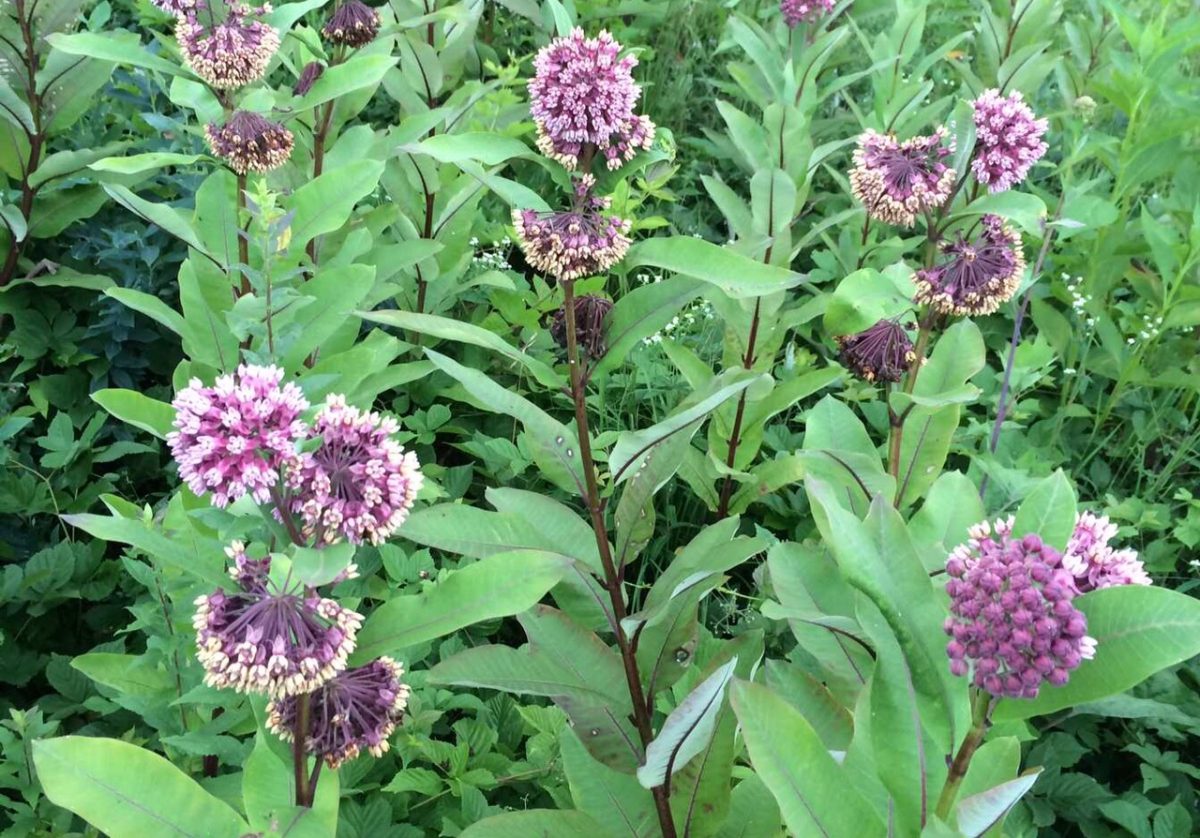Your backyard can be habitat for wildlife

[highlightrule] Learn more about KEEPING WATCH on HABITAT for 2017[/highlightrule]
Walk into Ernie McLaney’s backyard in southeast Charlotte and for a moment, you may forget you are in a neighborhood of more than 6,000 residents.
It’s a serene and private place, enclosed by trees, shrubs and a fence and lined with a curlicue paver path. But it’s ticking with life, even in midwinter. Carolina chickadees scold from oak branches. A woodpecker flashes its black and white banner of wings on a dead limb high above. Even on the leaf-litter ground cover, a gray moth rests, neatly camouflaged. Ernie and his wife, Debbie, have developed a backyard where birds, insects and animals are welcomed, and in the process, they’ve created an oasis for people, as well.
When the McLaneys moved into their home in the Stonehaven neighborhood 13 years ago the backyard was mostly grass. They removed the grass, leaving a neat oval in the center, like a picture in a frame – a frame of leaves as ground cover and an understory of shrubs that bear fruit, flowers or seeds that birds and insects enjoy. Even their deck is cut to allow a dogwood to grow right through.
Everything, it seems, was chosen with wildlife in mind: The brush pile tucked into a corner that serves as cover for Carolina wrens and chipmunks; the water fountain, placed next to a brick carport so that its musical burbling echoes off the wall, a siren song for curious birds; even the enormous trumpet vine, whose blossoms, says McLaney, create “a natural hummingbird feeder.”

Offering water is an important element for attracting birds and other wildlife, as this gathering at the birdbath shows. Photo: Ernie McLaney
Add to that the eight bird feeders, the bins of mealworms McLaney raises to put out for high-protein nestling food and the many, many bird baths, and you have what could almost be a tiny slice of nature preserve. The McLaneys have a National Wildlife Federation “certified wildlife habitat” sign posted out front, and their yard is registered through the NWF’s program. McLaney leads CROWN (Charlotte Reconnecting Ourselves With Nature), a Charlotte chapter of the N.C. Wildlife Federation. To qualify as a certified wildlife habitat, a space must have food, water, cover, places for wildlife to raise young and must be achieved through sustainable practices.

Even in winter, Ernie McLaney’s backyard teems with action, because of the work to create habitat. Photo: Ernie McLaney
That last bit – using sustainable, environmentally friendly methods to maintain a yard – is a stumbling block for so many, especially in the muggy, buggy South. Karen Dixon fought her own battle with a yard-chemical addiction and now says getting clean was one of the best things she ever did for her yard.
“My husband, he would spray weed-and-feed on the yard and then he would spray some kind of pesticide,” says Dixon, who lives on seven-tenths of an acre in a Matthews subdivision. “Then we had a problem with ants, and we would sprinkle and spray this ant stuff. Then some kind of deterrent for snakes. We were sowing grass seeds. We paid for lawn services.”
Dixon started to realize that her yard’s chemical regimen wasn’t just exhausting and expensive, it was damaging the environment. Her yard, which slopes to a creek, was dumping pesticides and herbicides into the water. So she pulled the plug.
“We just stopped. And that was the most amazing thing: we didn’t need [the chemicals],” Dixon says. She reduced her lawn and added native plants that didn’t seem to require artificial life support. She enjoys sightings of birds, squirrels and deer and hopes to see the frog population recover as they encounter fewer chemicals.
Tips to help you create a wildlife haven
Dixon has become a kind of ambassador for nature, with neighbors coming to her when they have questions about plants and animals. She emphasizes that the most important ingredient in creating a wildlife-friendly yard is long-term thinking.
“I would say the most important thing is, whatever decision you make … think about the repercussions, what will happen a few steps down the road.”
Creating a yard that welcomes wildlife may take up-front effort, but it can pay off in a smaller time investment down the road, says Jo Harashima, who lives on one-third of an acre in east Charlotte.
Native plants are a big part of this. “Once you get them started they are fairly low maintenance,” she says. “I like that, because as much as I like working in the yard, I also like hiking and kayaking, and I don’t want to be chained to doing yard work all weekend.”

Milkweed is a native plant and host to the monarch butterfly, a species in decline as milkweed plantings decline. Photo: Tom Earnhardt
Harashima’s butterfly garden includes natives such as milkweed, an easy keeper. In the fall, she doesn’t bother to bag leaves, but instead rakes them into the yard’s natural areas or composts them. And adding elements such as water for reptiles and birds doesn’t have to involve a big expense. “Any shallow dish can be a water source,” she explains.
The result, for Harashima, is a yard whose style she terms “eclectic,” and which has become a haven for birds and mammals – to say nothing of the way it lifts her own spirits.
“I cannot say enough about the joy I have watching the wildlife in my yard,” she says. Turning a yard into a spot for wildlife “will make you feel better and you will be helping our planet be a better place to live for us all.”

Wildlife needs places to shelter from bad weather and to hide from predators. Photo: Ernie McLaney